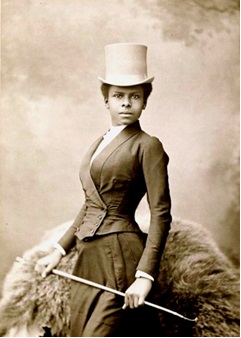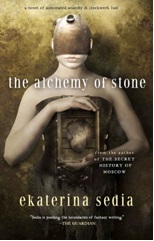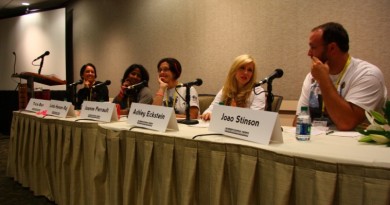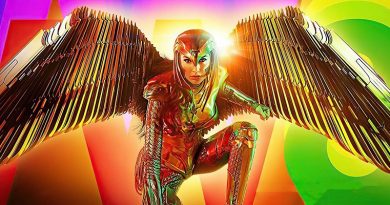Steampunk and the Heroine’s Journey: Part Four
The surprising impact of Steampunk novels on The Heroine’s Journey
A series by Mary Sheridan
PART 4 – STEAMPUNK FEMINISM
.
“They, the women, were like the gargoyles, Mattie thought.
Respected in words, but hidden from view
of those who ran the city,
and managing to live in the darkness,
in the secret interstices of life.”~ Ekaterina Sedia,
”The Alchemy Of Stone”
.
STEAMPUNK FEMINISM
Our discussion of diversity showed that history and literature are filled with inspirational and heroic stories that could – even need – to be told. Steampunk authors are breathing new life into those tales. There is freshness in the writing of fantastical stories and the reconstructed adventures of real people mixed with exciting new characters. Sometimes, there is pain and learning in revealing the truth about often quietly courageous lives from long ago. Steampunk represents opportunities to shed light on women, whatever their station in society may have been.
For decades, Steampunk authors have shaken up genre fiction norms by bending tropes and character archetypes as often as they have time and space, in order to write whatever tale they wish to tell in whatever way they wish to tell it. “Kickass” Victorian women, for example, long dismissed as a contradiction in terms or considered ridiculous fantasy, now appear as protagonists on a regular basis. At the same time, there is an apparent influx of female authors adding modern feminine and feminist perspectives to Steampunk novels.
Without relevant statistical evidence, the volume of anecdotal reporting and empirical data are used as general indicators. For example, although subjectively compiled, a Wikipedia list of “significant works of Steampunk” is still informative in that it represents the popular view of this gender shift among Steampunk writers.
On that list, only one woman author placed a book among the noteworthy publications during the first three decades of Steampunk’s existence (1970-2007). That writer’s name is Ginn Hale, and her novel was outnumbered twenty-to-one by male-authored books during those years. “Wicked Gentlemen” was then at the vanguard of feminist Steampunk and issues of diversity. It won the 2008 Gaylactic Spectrum Award, presented to “works that explore LGBT (Lesbian-Gay-Bisexual-Transgendered) topics in a positive way.” Ginn Hale joined a list of distinguished writers also honored by the Gaylactic Network that includes Joss Whedon (“Buffy”), Gregg Rucka (“Gotham Central”), Donald P. Bellisario (“Quantum Leap”), Arthur C. Clarke (“Imperial Earth”), and Ursula Le Guin (“The Left Hand of Darkness”).
Ginn Hale’s apparent breakthrough success may have marked a turning point for the genre. In the six years since “Wicked Gentlemen” was recognized, that same Wiki list of award-winning Steampunk reveals a dramatic change. The number of female authors jumps from five percent in 2008 to forty percent of the selected titles from 2014.
Almost every observer of the genre has noticed and mentioned this shift. Brian J. Robb summarized his view in “Steampunk: An Illustrated History”:
“Independent women and themes of emancipation are a key to female-driven Steampunk fiction. What is most promising about the latest wave of this fiction, influenced by the subculture and ‘fan productions’ such as “Girl Genius”, is the rise of the female author. Gail Carriger, Cherie Priest, Ekaterina Sedia and others are at the forefront of the current wave of female-driven Steampunk.”
Goodreads’ Listopia offers a dozen lists of selected categories of Steampunk novels. Prominent among them is a still-growing collection of fifty-two highly recommended reads entitled, “Buttkicking Female Steampunk books.”
Forty of these popular novels – 78% of the list – are written by women. This neither proves nor disproves that women write more or better female protagonists than men, but it can be viewed as another subjective indicator that the number of women writing Steampunk is increasing. Among the female authors on the “Buttkicking” list are several with subtle or public agendas to establish new paths for fictional heroines. They address real-time issues, from gender politics to discrimination and abuse. These women writers have discovered Steampunk’s literary time machine, and they are beginning to reconfigure its matrix, creating and integrating a Heroine’s Journey.
THE WOMEN OF STEAMPUNK
Three ways in which writers are inspired to create Steampunk protagonists are discussed below. In an Appendix that will follow the series’ forthcoming conclusion are examples of Steampunk authors thoughts about what attracted them to this genre as well as their unique approaches to writing its stories. To whet latent appetites for Steampunk, the Appendix will also include excerpts from four literary reviews of very successful Steampunk novels.
FEMALE PROTAGONISTS: STEAMPUNK STORIES ARE EVERYWHERE
In Parts 1 and 2 of this series we established that bringing characters from the past into the future is part of the foundation of Steampunk writing. This can be accomplished by rewriting existing fictional characters and reimagining old stories, or finding ways in which real life historical figures can participate in a more modern yet still Steampunk environment. Characters and their traits may be changed; identities switched or even fused; authors can write completely new characters from their imagination or real life influences; and in some cases, they build upon a small piece of information to craft an interesting life story.
Rewriting Old Fiction into New Steampunk
Key to the successful retelling of a familiar tale is an author’s ability to answer the central question, “What if?”, while at the same time retaining the important central values of the original story. In one of the Top Five Goodreads’ Buttkicking Female books, the protagonist is a female cyborg and ace mechanic with an android sidekick; the story takes place in continental Asia; a lunar colony is a secretive, corrupt prison; the threat of worldwide plague is a catalyst for fear and paranoia; and cyborgs receive better treatment if they hide their mechanization from humans. Yet in this unfamiliar landscape you will also find evil stepsisters and a handsome prince. Like her forerunner, this new protagonist “Cinder” is a servant-daughter with an independent streak and an undeniable attraction to the charming young prince who does not understand that cyborgs do not attend grand balls.
In writing “Cinder”, author Marissa Meyers very successfully created a dystopian version of “Cinderella.” The author addresses current issues such as cultural diversity, the reach of technology, medical ethics, social rejection, and generational division. It is a mix of old and new that transports you to meet an old friend in a fantastical place and time of the sort that earned Steampunk its distinctive wings.
Bringing History Forward, Steampunk Style
Ada Lovelace’s father, poet Lord Byron, abandoned mother and child shortly after she was born in 1815. When Ada’s mother realized that the girl was gifted, she ensured that her daughter received special tutoring in the sciences. Ada became a metaphysician and expert in “Scientific Computing” who designed a program for Charles Babbage’s The Difference Engine and accurately predicted technology such as computer-generated music. Ada died tragically from cancer when she was just 37 years old. It will come as no surprised that she is a major star in genre fiction: her real life was “Steampunk” more than a century before this genre had a name.
Lovelace’s computing genius would have made her feel at home in the age of technology. Bring her forward in time and there are countless ways in which to employ her character quite naturally and with great effect. In real life, she is remembered every year on Ada Lovelace Day, an international celebration of the achievements of women in science, technology, engineering and maths (STEM).
Unfortunately, young Ada has been recreated in so many Steampunk works that many other great and undiscovered historical stories are being unintentionally ignored. Authors could earn new readerships and help to expand diversity by bringing to light the lives of other Victorian era women from around the world.
Finding Character in Mysteries and Enigmas: The Power of Suggestion
In 1891, renowned photographer Félix Nadar created a set of portraits of a woman he identified as Selika Lazevski, a celebrated equestrian based in Paris.Although her photographs are widely known and Nadar’s story has its staunch believers, cultural historians have been unable to verify Lazevski’s existence. No record has been found to prove Nadar’s account of his subject, a woman purported to be an accomplished performer who often gave public demonstrations of the physically demanding haute école (sometimes known as “dance” on horseback, and comparable to the modern Olympic discipline of Dressage). Yet even without a confirmed identity, the “Lazevski portraits” found their way into the French Archives based on Nadar’s story, and were also published in a Victorian book (“La France Noir”) that described three decades of black culture in France.

Some suspect that Nadar photographed an unknown model and concocted the Lazevski biography to improve the prospect of selling his work – speculation and debate that is based, at least in part, on visual assessment of the images. While French society was more liberal than the often prejudicial Victorian England, the woman in these portraits defies the values of the period through obvious suggestions of feminine power. In the image shown here, there is strength and readiness in the woman’s upright posture and grasp of the whip; pride in her direct gaze and perfectly-tailored riding habit; and a defiant flash in her piercing gaze. Based on that assessment, one could argue that Nadar produced an artistic condemnation of Victorian mores by capturing a black woman’s very strong attitude and stance at a time when these would not have been generally acceptable. This artistic work might have been intended by Nadar to be a scandalous cultural indictment. However, from today’s perspective it feels like the photographer imagined an early blueprint of the qualities we now seek in a strong heroine.
Research continues in Europe and Great Britain, attempting to corroborate Selika Lazevski’s existence. Until or unless such evidence is found, we are left to decide for ourselves: is this the portrait of a confident and successful black woman in 1890’s Paris? Did Nadar actually photograph a model, provoking her into rebellious-looking poses until her eyes flashed angrily toward his camera? A Steampunk author empathetic to gender, race, feminism, submission, and subjugation (to name a few potentially relevant issues) could spin dozens of stories from these photographs, making a picture truly worth more than a thousand words.
Clearly, women are attracted to the potential of Steampunk: the freedom this genre provides in every aspect of storytelling and the invitation – no, demand that history be retold. A great many stories have not yet been written, but Steampunk makes you believe that, one day, an author will choose to revisit them. More women will be protagonists but not masculinized characters designed to fit the male archetype of heroism. Steampunk novels are already offering prototypically strong women whose stories reject Joseph Campbell’s concept of the Hero’s Journey.
Those prototypes will develop into a new archetype, one that parallels the male myth but does not change or erase it. The new archetype will be that much sought-after myth of their own; something that women have deserved but so far been denied. Steampunk fiction may be closer than any other genre to making the Heroine’s Journey a reality.
NEXT UP:
The final chapter in our WOMEN IN STEAMPUNK series…
THE HEROINE’S JOURNEY and STEAMPUNK FICTION
When Joseph Campbell wrote his Hero’s Journey, he is reported to have said that women didn’t need a myth of their own. Women disagreed, and although it has taken decades, it seems that at last the final barriers to establishing their own Heroine’s Journey are breaking down.
To some, it may still appear that Steampunk fiction is an unlikely genre to propel this struggle from discussion to prototype to archetype, and yet that is exactly what Steampunk authors are intentionally doing. Perhaps those people don’t realize that corsets are not compulsory, and very often serve as holsters.
Mary Sheridan is a former ER and Trauma nurse with a life-long passion for real and imagined adventure, often on horseback. She is an original fangirl and self-described Ancient Geek with interests in a wide range of fandoms.
- Oscars: Free Us Or Die - February 23, 2015
- SAGA Read Along: Inspiring Characters - February 7, 2015
- Is There A Star Wars Gene? - January 13, 2015











